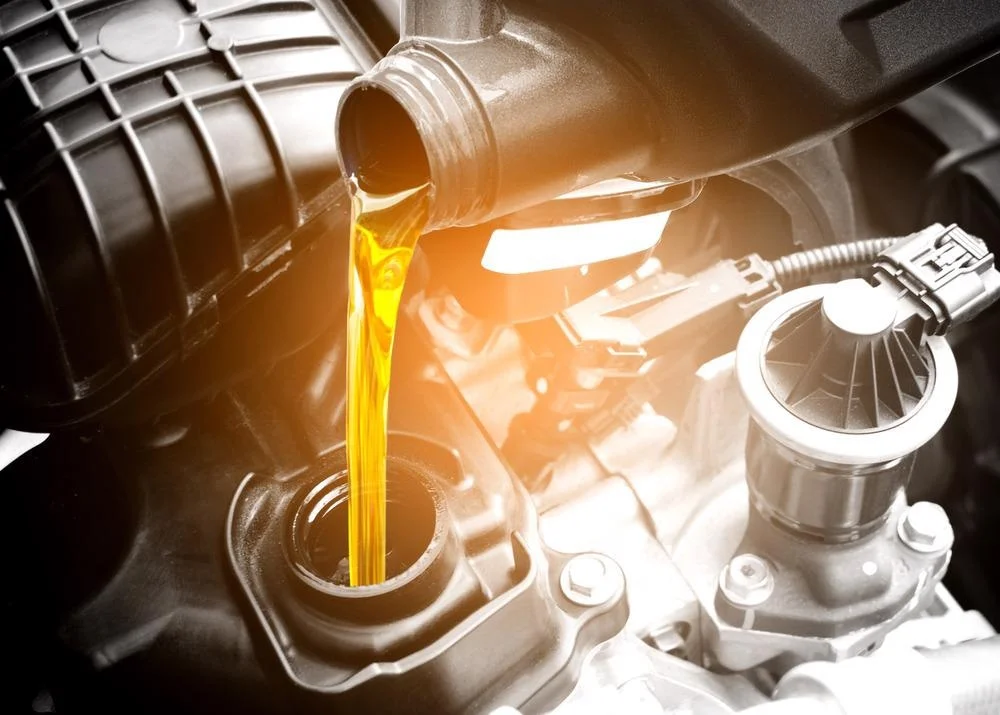


The automotive industry is constantly evolving, driven by the pursuit of enhanced performance, efficiency, and sustainability. At the forefront of this revolution lies nanotechnology, a cutting-edge field that manipulates matter at the atomic and molecular scale. One area where nanotechnology has made significant strides is in the development of advanced motor oils, offering a game-changing solution for vehicle engines.
This comprehensive article delves into the world of nano-enhanced motor oils, exploring their composition, mechanisms, and the remarkable benefits they offer. We will uncover the secrets behind nanoparticle additives, their ability to reduce friction and wear, improve fuel efficiency, and extend oil life. Additionally, we will examine the potential challenges and compatibility considerations, as well as the future prospects and ongoing research in this exciting field.

Nanotechnology is a multidisciplinary field that encompasses the study, manipulation, and application of materials at the nanoscale, typically ranging from 1 to 100 nanometers. At this incredibly small scale, materials exhibit unique properties and behaviors that differ significantly from their bulk counterparts. Nanotechnology has revolutionized various industries, including electronics, medicine, energy, and now, the automotive sector.
At the heart of nano-enhanced motor oils are nanoparticle additives, which are microscopic particles composed of various materials. These nanoparticles, when incorporated into motor oils, impart unique properties that enhance the lubricant's performance and longevity.
| Nanoparticle Materials | Properties and Benefits |
|---|---|
| Carbon Nanotubes | Exceptional strength, thermal conductivity, and lubricity |
| Graphene | High strength, thermal conductivity, and lubricity |
| Metal Oxides (Titanium Dioxide, Zinc Oxide) | High thermal conductivity, anti-wear characteristics, oxidation resistance |
One of the primary benefits of nanoparticle additives is their ability to reduce friction and wear between moving engine components. The nanoparticles act as microscopic ball bearings, creating a smoother surface interaction and minimizing metal-to-metal contact. This not only reduces wear on engine parts but also improves fuel efficiency by reducing the energy lost to friction.
Moreover, nanoparticle additives enhance the lubricity and load-bearing capacity of motor oils. They form a protective tribofilm on metal surfaces, preventing direct contact and reducing the risk of scuffing and seizure under high loads. This increased lubricity also contributes to improved fuel economy and reduced emissions.
By reducing friction between moving engine components, nano-enhanced motor oils minimize the energy lost to overcoming frictional forces. This translates into improved fuel efficiency, as less energy is wasted, resulting in better mileage and lower emissions.
Thermal management is another area where nano-enhanced motor oils excel. Nanoparticles like carbon nanotubes and metal oxides possess exceptional thermal conductivity, facilitating efficient heat transfer away from critical engine components. This helps maintain optimal operating temperatures, reducing the risk of overheating and extending the engine's lifespan.
Nano-enhanced motor oils demonstrate superior oxidation resistance and extended oil life. The nanoparticles act as radical scavengers, neutralizing reactive species that contribute to oil degradation. This translates into longer drain intervals, reducing maintenance costs and minimizing environmental impact.
By resisting oxidation and slowing down the degradation process, nano-enhanced motor oils can significantly extend the time between oil changes. This not only reduces maintenance costs but also minimizes the environmental impact associated with frequent oil disposal.
| Benefit | Mechanism |
|---|---|
| Friction Reduction | Nanoparticles act as microscopic ball bearings |
| Wear Protection | Tribofilm formation on metal surfaces |
| Improved Fuel Efficiency | Reduced energy loss from friction |
| Efficient Heat Transfer | High thermal conductivity of nanoparticles |
| Oxidation Resistance | Radical scavenging by nanoparticles |
| Extended Oil Life | Resistance to oil degradation |
While nano-enhanced motor oils offer numerous benefits, compatibility with existing engine components is a crucial consideration. Nanoparticles may interact differently with various materials, potentially affecting the performance or longevity of certain engine parts. Extensive testing and research are necessary to ensure compatibility and mitigate any potential issues.
In addition to engine components, nanoparticle additives must also be compatible with other additives present in motor oils. Interactions between nanoparticles and other additives could potentially lead to undesirable effects or diminished performance. Careful formulation and testing are required to ensure optimal compatibility and synergy between all components.
As with any new technology, the environmental impact and potential health risks associated with nanoparticles require thorough investigation and responsible handling. While nanoparticles offer numerous benefits, their potential for bioaccumulation, persistence, and toxicity must be carefully evaluated. Proper disposal methods and safety protocols should be implemented to mitigate any potential risks.
| Potential Challenge | Mitigation Strategies |
|---|---|
| Compatibility with Engine Components | Extensive testing and research |
| Compatibility with Other Additives | Careful formulation and testing |
| Environmental Impact | Thorough investigation and responsible handling |
| Health Risks | Proper disposal methods and safety protocols |
Several leading companies have already introduced nano-enhanced motor oil products to the market, offering consumers cutting-edge solutions for their vehicles.

Millers Oils: Nanodrive range of products
Lubrication Specialties Inc. (LSI): NanoLub line of products
Putoline Oil: Nanotech range of motor oils
These companies have embraced nanotechnology in their motor oil formulations, leveraging the power of nanoparticle additives to enhance performance, reduce wear, and extend oil life.
Ongoing research and development efforts are focused on optimizing nanoparticle formulations to further enhance their performance and compatibility. Scientists and engineers are exploring new materials, concentrations, and combinations of nanoparticles to unlock even greater benefits for motor oils.
Optimizing existing nanoparticle formulations
Exploring new materials (e.g., graphene, 2D nanomaterials)
Developing strategies for compatibility and environmental concerns
In addition to optimizing existing formulations, researchers are also exploring new materials and applications for nanoparticle additives. Emerging materials like graphene and other two-dimensional nanomaterials show promising potential for enhancing motor oil performance and introducing novel functionalities.
While nano-enhanced motor oils offer significant advantages, addressing compatibility and environmental concerns remains a priority. Researchers are working to develop strategies and protocols to ensure compatibility with existing engine components and minimize any potential environmental or health risks associated with nanoparticle exposure.
Nanotechnology has opened new frontiers in the development of advanced motor oils, offering enhanced performance, protection, and efficiency for vehicle engines. As research and innovation continue to drive this field forward, nano-enhanced motor oils are poised to become the industry standard, delivering tangible benefits to both consumers and the environment.
While addressing potential challenges and responsible handling is crucial, the future of nano-enhanced motor oils is promising, paving the way for a more sustainable and efficient automotive industry. With ongoing advancements in nanotechnology and a commitment to responsible innovation, the possibilities for further enhancing motor oil performance are truly exciting.
The article mentions the need to investigate environmental impact and responsible handling of nanoparticles. Proper disposal methods and safety protocols should be implemented to mitigate any potential risks to the environment.
Careful formulation and testing are required to ensure optimal compatibility and synergy between nanoparticle additives and other additives present in motor oils to avoid any undesirable effects or diminished performance.
The article states that since the nanoparticle additives do not contain any solid particles, they do not deposit or clog filters or oil passages, ensuring optimal engine performance.
While the article highlights the benefits of nanoparticle additives, it also acknowledges the need to evaluate potential health risks associated with nanoparticle exposure and implement proper safety measures.
By filling in gaps and grooves as small as 40 microns, nanoparticles can decrease engine noise, contributing to a smoother and quieter engine operation.
Yes, the article mentions that nanoparticle additives can improve oil flow during cold starts, providing better engine protection and performance in low-temperature conditions.
According to the article, nanoparticle additives are suitable for use with both mineral and synthetic engine oils, offering benefits across various oil formulations.
The article suggests adding nanoparticle additives every 40,000 miles to ensure that there are enough nanoparticles available to fix new wear and maintain optimal engine protection.
Yes, by reducing friction and wear, nanoparticle additives can extend the lifespan of engine components, potentially reducing the need for frequent replacements and overhauls.
The article mentions that nanoparticle additives should not be used in oil bath clutches or wet clutches, as the high degree of friction reduction could potentially cause issues in these applications.

Sarah isn't your average gearhead. With a double major in Mechanical Engineering and Automotive Technology, she dived straight into the world of car repair. After 15 years of turning wrenches at dealerships and independent shops, Sarah joined MICDOT to share her expertise and passion for making cars run like new. Her in-depth knowledge and knack for explaining complex issues in simple terms make her a valuable asset to our team.







